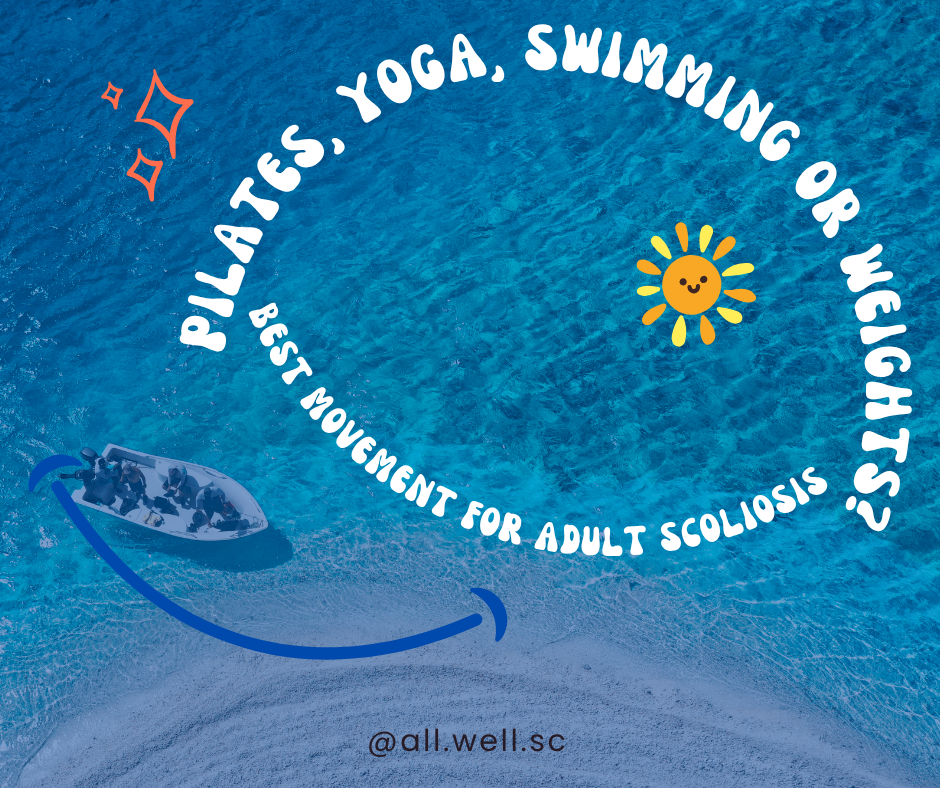
If you’re an adult living with scoliosis, you’ve probably wondered:
What is the best form of exercise to support my spine?
Pilates, yoga, strength training, or even swimming — which is safest and most effective?
In this article, we’ll explore the benefits and considerations of each, plus the importance of scoliosis-specific approaches to exercise.
Understanding Adult Scoliosis and Movement
Scoliosis is a complex 3D spinal condition involving lateral curvature and spinal rotation. Unlike typical back pain, scoliosis requires careful attention to how the spine moves and how muscles support it. Exercise is a vital part of managing scoliosis because it:
However, not all exercises are equally beneficial for scoliosis. What works well for one person may not be suitable for another.
Pilates for Scoliosis: Core Control and Spinal Awareness
Pilates is often recommended because it emphasizes core strength, posture, and controlled movement. But general Pilates classes don’t address scoliosis curves specifically.
Scoliosis-specific Pilates integrates principles from the Schroth method — a specialized exercise program designed to reduce spinal rotation and improve posture through targeted breathing, muscle activation, and positioning.
When done properly, Pilates can:
Caution: Without scoliosis-specific guidance, some Pilates exercises may cause imbalance or overcompensation, potentially worsening symptoms.
Yoga and Scoliosis: Flexibility With Modifications
Yoga offers benefits such as improved flexibility, relaxation, and mindful breathing, which can support scoliosis management.
However, certain poses involving deep twists, backbends, or uneven stretching might increase spinal rotation or strain muscles unevenly.
Key advice for scoliosis and yoga:
Weight Training: Building Functional Strength Safely
Resistance training can be very effective in supporting scoliosis by:
The key to safe weight training with scoliosis is proper technique, controlled intensity, and personalized program design. Heavy lifting or improper form can risk injury or curve progression.
Swimming: Low-Impact and Spine-Friendly Exercise
Swimming is often praised as an excellent scoliosis-friendly sport because:
However, pay attention to swimming strokes. Freestyle and backstroke tend to be more balanced, while breaststroke and butterfly may stress the neck, shoulders, or lower back if performed improperly.
Swimming doesn’t correct scoliosis but can complement a scoliosis-specific rehab program.
Why Personalization Matters: The Role of Curve-Specific Movement
Every scoliosis curve is unique in shape, severity, and rotation. Therefore, personalized assessment is crucial.
Before starting any exercise routine, scoliosis patients should:
Without proper customization, exercises can cause compensations, worsen asymmetries, or increase pain.
The Scolibalance Approach: Integrating Science and Movement
Approaches like Scolibalance focus on:
This method aims to empower adults with scoliosis to move confidently, reduce discomfort, and improve quality of life.
Final Thoughts
If you have scoliosis, movement is medicine — but it needs to be the right medicine for your spine.
Pilates, yoga, weights, and swimming can all be part of a healthy lifestyle — when approached with awareness, guidance, and personalization.
Always consult a scoliosis specialist or physiotherapist before starting new exercises, and consider scoliosis-specific programs that respect your unique spinal curves.
Ready to learn more about scoliosis-specific movement? Contact us to schedule a personalized assessment and find out what exercises are best for you.